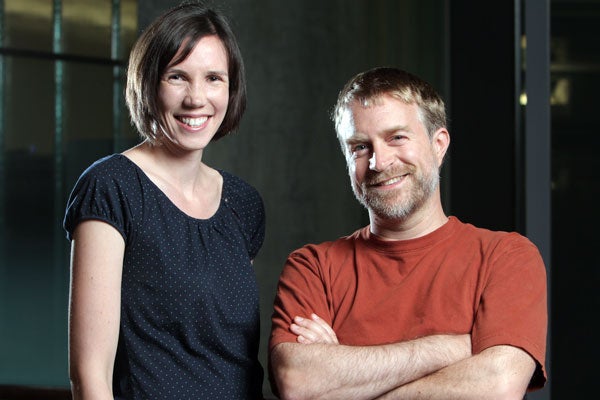
Engaged students, higher marks on finals: benefits of the inverted classroom
Published: July 18, 2014
What's an inverted classroom? Just ask students in some University of Toronto computer science courses.
The teaching method flips traditional notions of classwork and homework so that students learn some of the course material through videos and readings at home and do what used to be homework in class with the help of their professor.
The innovation is one of the perks of the department’s venture into Massive Open Online Courses (MOOCs), in which thousands of students from all over the world take free courses online such as some from leading U of T computer scientists. The videos developed for the MOOCs are now used to benefit U of T students.
The inverted courses started rolling out not long after Andrew Ng, co-founder of Coursera, one of the leading providers of MOOCs, visited U of T's Department of Computer Science last year to evangelize all things MOOC. A number of professors wanted to see how some of the MOOC techniques could be used to benefit students enrolled in computer science classes on campus.
"It was the first time I’ve ever gone to a seminar on computer science and felt choked up,” said Diane Horton, who teaches a third-year Introduction to Databases course. “But I was more excited about the concept of inverted classrooms than the MOOCs. I’ve always liked having active exercises in class but the challenge has always been finding the time to do them.”
After developing two Coursera-hosted MOOCs, Paul Gries and Jennifer Campbell re-used the MOOC materials they had produced in an on-campus first-year course, Introduction to Computer Programming. Every week, students watched an hour’s worth of short videos and solved pop-up quizzes to measure whether they had learned the material. Each video in the course begins with one of the professors giving a brief introduction to a topic. After that, the professor fades out and the video becomes a screencast that demonstrates "live" programming. The professor provides explanations along the way.
“The use of videos with quizzes puts the learning directly in students’ hands,” said Gries. “If they don’t understand a concept, they can re-watch the videos and take the quizzes again. This allows students to learn at their own pace. It is exciting.”
Having prepared for class on their own time, students spend their lecture time solving challenging problems with the support of their professor, who helps them through the hurdles that they routinely face when learning to program.
“As I walk around class, I can see what people are doing and how long they’re taking,” says Gries. “It’s interesting to see what causes difficulty and what the common mistakes are so I can then be able to address those right away in class. It’s very effective to be able to do that.”
Horton agrees that being available to help students as they work on assignments in class is key.
“There’s a reason I’m there. There’s value added that I bring. I really enjoy taking something that students find baffling and breaking it down to make it easy to understand. That can be done in a video, but for the hardest topics, ideally you’re able to respond to the looks on peoples' faces and be able to help them on the spot. You can see if they’re getting it and come back to deal with the problems that are arising. That’s what I love doing.”
The inverted courses are still new, but they’re already reaping positive results.
“We don’t really know yet how much this approach improves learning but we’re seeing some positive signals,” said Gries. “The final exam marks, for example, are up eight per cent from last year when the course was taught in a traditional format.”
The teaching model is being used in other departments and has got professors thinking creatively.
“There are many ways to incorporate some aspects of inverted classrooms,” said Campbell. “I don’t think you have to go all or nothing. Some courses may have particular topics that could be inverted. It also doesn’t necessarily have to be done with video.
"Ensuring that students prepare well before class so that they can practice in class is what makes this method interesting.”
Binks switched his major from Astrophysics to Computer Science after taking the inverted classroom course.
Jessica Lewis is a writer with the Faculty of Arts & Science at the University of Toronto.


